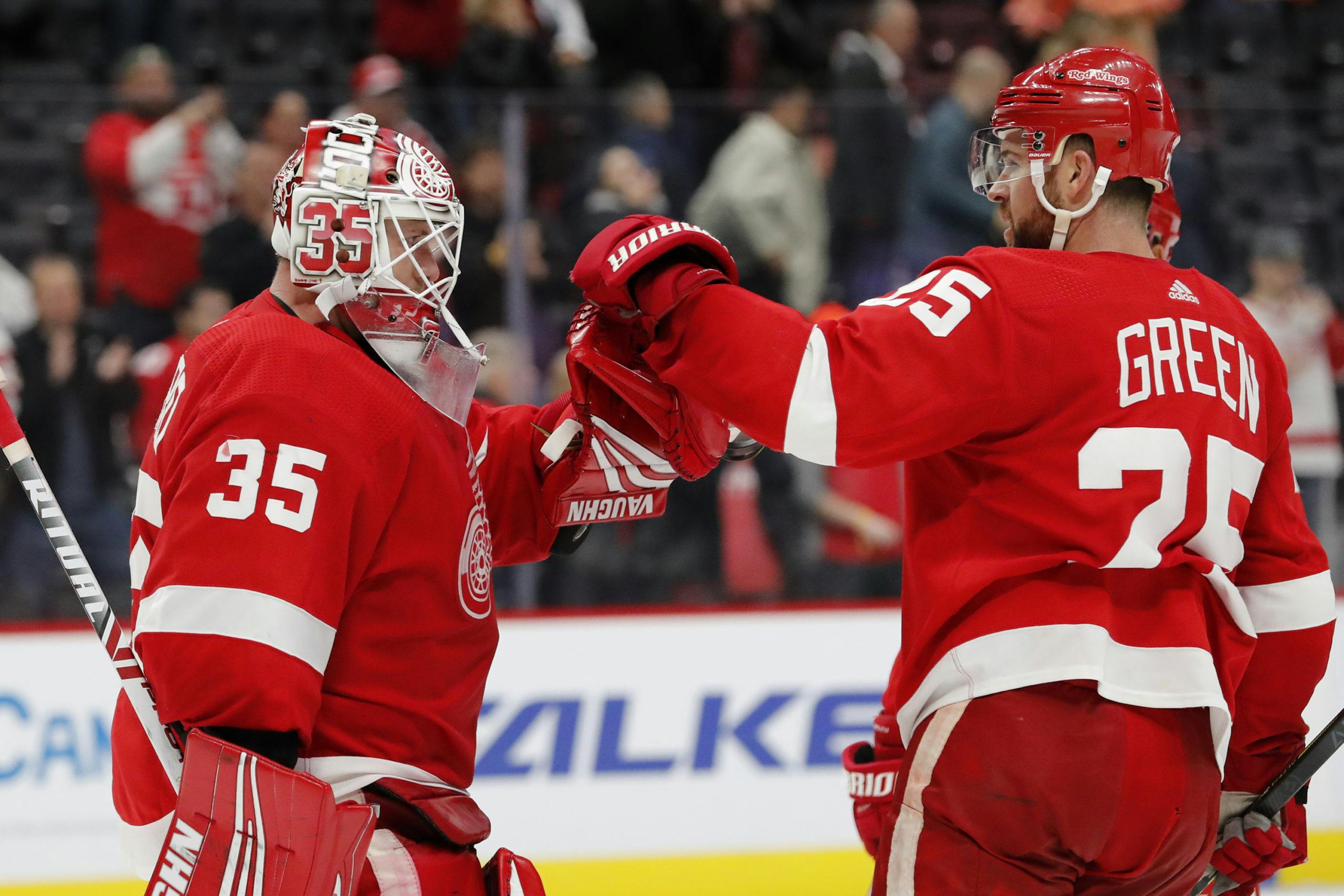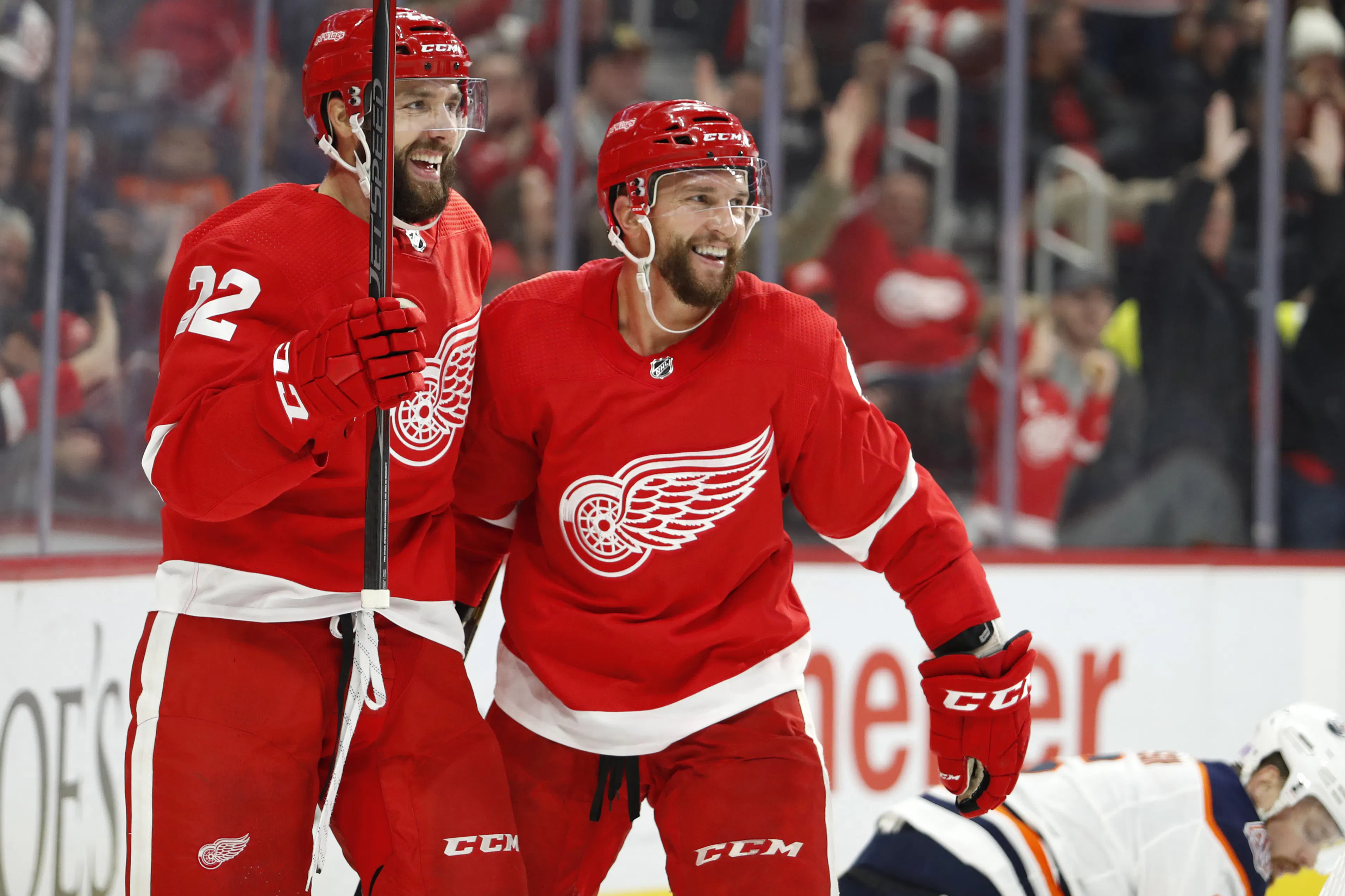Trade deadline rubric: How can Steve Yzerman fast track the rebuild?

By Cameron Kuom
4 years agoFeb. 24, 3 p.m. ET — mark it on your calendar.

That, of course, is the time and date for the NHL Trade Deadline. Barring any sort of miraculous surge, the Red Wings will enter deadline day in the bottom-3 of league standings, most likely dead-last. With a 12-31-3 record, they are 12 points behind the next worse team. That’s WITH a game in hand.
Meaning, for the fourth straight season, Detroit will join the sellers market. This time around, however, they don’t have a big fish to flaunt. Last year it was Gustav Nyquist, the year prior it was Mike Green before an inopportune injury.
There are a couple names on expiring contracts that GM Steve Yzerman will get calls on, but none will land a high-end draft pick. What will really dictate how well this deadline goes, and ultimately progress this rebuild, will be if Yzerman can shed a player or two with term.
Like the Tomas Tatar trade from 2018, the unexpected nature of a move like that can make a huge difference in the future plans of the team. The long-term vision becomes much more feasible to reach, which is especially significant when the core of the team is in their mid-20s. Dylan Larkin is 23, Tyler Bertuzzi 24, and Anthony Mantha 25. Their window will only be open for so long.
Now, that’s not to say it will be easy. Unlike that Tatar trade, most of the assets on Detroit are best served in depth roles to support an already established base. It will take some creativity, be it retaining salary or even taking some back. And there are other items on Steve Yzerman’s agenda to take care of as the deadline approaches, hockey trades being one (Andreas Athanasiou has long been rumored, Jonathan Bernier as of late).
But to keep latent terms simple and speculation to a minimum, there is a clear priority: Field calls on pending unrestricted free agents and attempt to move on from a player or two with term.
How we’ll judge Yzerman’s first deadline as GM of the Red Wings can largely be defined as of today. There is a best case scenario, worst case scenario, and a middle ground that takes care of business. This is Steve Yzerman’s rubric for the 2020 NHL Trade Deadline.

Luke Glendening has been a trade deadline target over the last three years. Could this finally be the year he is dealt? (Raj Mehta-USA TODAY Sports)
A – Best case scenario
Surely the most optimistic — and most unrealistic — result would include trades of veteran forwards Luke Glendening and Darren Helm. Frans Nielsen and Justin Abdelkader aren’t going anywhere, both having at least two more years left on their deals after this one. But it’s fair to believe Glendening and Helm will draw interest, albeit mild interest. Yet, they both play a style of game that coaches will vouch for.
Toronto has kicked tires on Glendening for the last handful of years, but former GM Ken Holland’s relatively high price point — a second round pick — on the Michigan product ended the phone call very quickly. The Leafs’ interest mainly spurred from former Red Wings head coach Mike Babcock. Now that Babcock is out in Toronto, that likely ticks them off as a possibility.
Darren Helm is in a similar boat. The 32-year-old plays with speed and a work ethic that would be welcomed on any fourth line. Combined with over 80 games of playoff experience, Helm won’t be impossible to move.
Both Glendening and Helm have one year left on their contracts after this one, and with the way the market shakes out, chances are a mid-to-late round pick is the best offer that will be out there. But no matter, despite both forwards being fine players in their own right, dealing one or both would be addition by subtraction. That’s just how things work in a salary cap world.
Receiving high returns on the likes of Mike Green, Jimmy Howard, and Trevor Daley would also help bump up the grade, but that seems even more unlikely than dealing both Glendening and Helm.
Ultimately, if Yzerman is able to deal one or both of Glendening or Helm, it would be hard pressed to not view this as a successful trade deadline.
B – Middle ground
This is the safe bet for how things turn out. Realistically, Glendening and Helm will get calls, but nothing more than just tire kicking. It all comes down to what happens with the pending UFAs.
The only one I feel certain must be moved is Green. His days in Detroit seem to be done, in what has been a fine five year run with the organization. His offensive play has already started to decline, and his health leaves even more question marks. Detroit has enough in the pipeline to make it through the rest of the season without him, which is why he feels like the only-must-move player.
Realistically, Green could go for a third round pick, possibly a second if the buying GM is desperate enough. His ability to run a powerplay will be attractive to playoff bound teams looking for depth on the blue-line.
Howard will be a tough sell, however, seeing as his play has regressed much faster than anticipated. Depending on the goaltending market, Howard might be a last resort option for teams looking to add a backup netminder. Craig Anderson, Corey Crawford, Alexander Georgiev, and Robin Lehner are available options more preferable than Howard. If Yzerman is even able to deal Howard, I’d expect the return to be in the ballpark of a fourth or fifth round pick and/or a C-prospect. Anything more would be a considerable win.
However, in all likelihood, it might just make more sense to hold onto the long-time Red Wing for the remainder of the season. For as much as the Syracuse, NY, native has done for the franchise, a late round pick won’t be worth it to end ties this way. Simply put, only pull the trigger on an offer too good to refuse (second/third round pick). If not, there’s nothing wrong with holding onto Howard and figuring out his future in the offseason.
As for other pending free agents, the returns will likely be minimal as well. On Daley, any semblance of an offer, in all honesty, will be too good to refuse. Playoff experience is the only thing going for him in terms of trade value. Yzerman would be foolish to hang on to the 36-year-old if he doesn’t have too.
Jonathan Ericsson and Alex Biega shouldn’t garner much attention. Maybe Madison Bowey gets some interest for his decent scoring rate. Picking up any sort of decent return on any of those three would do Yzerman well on the grading scale.
C – Worst case scenario
Staying pat and making no moves (primarily holding onto Green) would be the worst case scenario for the Red Wings.
Luckily for Detroit fans, worst case scenario isn’t all that bad. Yes, ideally you would like to see some moves made to add promising assets, be it in the form of draft picks or prospects. Hitting on the that previously mentioned Larkin-Mantha prime window is very important, but even a middle ground result won’t have that much real impact.
With basically all of Detroit’s rentals up for grabs having limited value on the trade market, staying pat would only cost them a couple of scratch off lottery tickets. If the 2017 Draft taught us anything, missing out on a few kicks at the can isn’t the end of the world. Really, the draft becomes a crap shoot after the first round. Yes, it would be smart to obtain those extra picks/prospects, but holding on to the likes of Green and Howard wouldn’t be a death sentence.
All in all, there isn’t really an outcome where Detroit can lose, at least not with any substantial impact. With that said, this is also a prime opportunity to fast track the rebuild. So while the Red Wings can afford to lose, they can’t exactly afford to not win, either.
Recent articles from Cameron Kuom





